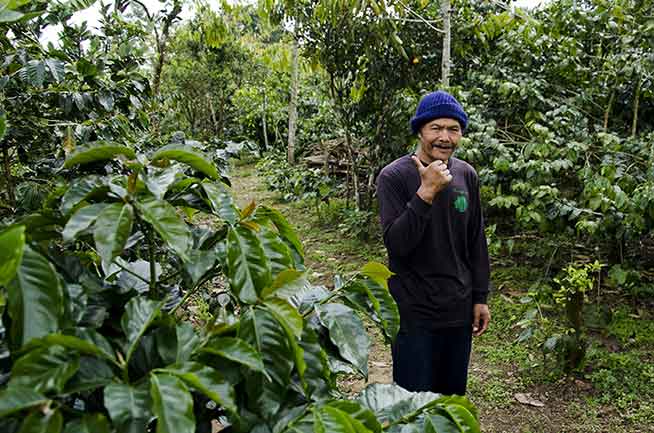Bali coffee production starts with the good soil where it is planted and how the farmer nurtures it with good knowledge and passion.
Bali, an Indonesian paradise known for its stunning landscapes and vibrant culture, is also gaining recognition in the world of coffee production. The journey of Balinese coffee, from lush plantations to expert roasting, is a testament to the dedication and craftsmanship of local coffee farmers. In this article, we will take you through the fascinating process of Balinese coffee production, step by step.

Plantations: Where It All Begins
Balinese coffee production begins on the picturesque coffee plantations scattered across the island. These plantations are often nestled in the highlands, such as the famous Kintamani region, where the elevation and volcanic soil create an ideal environment for coffee cultivation.
Varieties of Coffee
In Bali, you’ll find both Arabica and Robusta coffee varieties. Arabica thrives at higher altitudes and is known for its nuanced flavors, while Robusta, grown at lower elevations, is favored for its robust and strong taste.
Shade-Grown Coffee
Many Balinese coffee farmers practice shade-grown coffee cultivation. Coffee plants are intercropped with shade-providing trees, which not only protect the coffee from harsh sunlight but also promote biodiversity in the region.
Harvesting: Meticulous Selection
The coffee harvesting season in Bali typically runs from May to August. During this time, skilled coffee pickers meticulously select only the ripest coffee cherries. Hand-picking ensures that only the highest-quality cherries are chosen, contributing to the coffee’s overall excellence.
Coffee Processing: A Delicate Art
Once the coffee cherries are harvested, they go through a series of carefully orchestrated processing steps:
1. Depulping: The outer pulp of the coffee cherries is removed, revealing the beans inside.
2. Fermentation: The beans are soaked in water to ferment for a specified duration. This step is crucial to developing the coffee’s flavor.
3. Washing: The fermented beans are thoroughly washed to remove any remaining pulp.
4. Drying: The coffee beans are spread out in the sun to dry naturally. This step can take up to two weeks, during which the beans are regularly turned and monitored.
5. Hulling: After drying, the parchment layer surrounding the beans is removed through hulling machines.
6. Sorting: The beans are carefully sorted to remove any defective or damaged ones.
Roasting: Bringing Out the Flavor
Roasting is the final and arguably the most critical step in Balinese coffee production. Coffee roasters take great care in roasting the beans to perfection. The roasting process involves precise temperature and time control to unlock the unique flavors of the beans.
Balinese coffee roasters often employ traditional methods, such as wood-fired roasting, which imparts a subtle smoky flavor to the beans. This artful roasting brings out the coffee’s distinct characteristics, whether it’s the bright acidity of Arabica or the robustness of Robusta.
Conclusion: A Cup of Balinese Excellence
From the lush plantations high in the mountains to the expertly roasted beans, the journey of Balinese coffee production is a labor of love. Each step, from harvesting to processing and roasting, is carefully executed to create a cup of coffee that captures the essence of Bali’s natural beauty and rich coffee heritage. The next time you savor a cup of Balinese coffee, know that you are enjoying a taste of the island’s craftsmanship and dedication to producing exceptional coffee.
